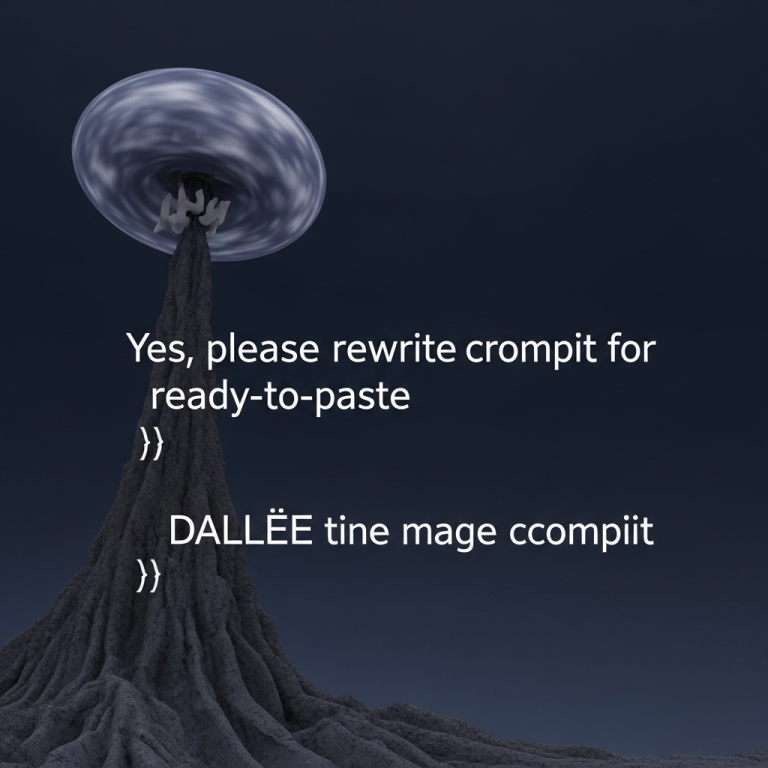Simple Nail Designs: Effortless At-Home Beauty
Yes! You can absolutely create stunning, simple nail designs at home with just a few basic tools and a little creativity. This guide will walk you through easy techniques to elevate your manicure game without salon prices or complicated steps, making beautiful nails accessible for everyone.
Welcome, nail lovers! Do you ever scroll through gorgeous nail art online and sigh, thinking, “I could never do that”? Or maybe you’re tired of basic polish and crave a little something extra, but the thought of intricate designs seems totally overwhelming. You’re not alone! Achieving stylish, cute nail designs at home often feels like a puzzle. But guess what? It doesn’t have to be! With just a few simple tricks, you can transform your nails into miniature works of art. This guide is packed with easy-to-follow steps and tips to unlock your inner nail artist. Get ready to discover how fun and rewarding DIY nail design can be!
Why Embrace Simple Nail Designs?
The beauty of simple nail designs is that they don’t require a professional artist’s touch or a vast collection of specialized tools. They’re perfect for busy schedules, tight budgets, and anyone who just wants to add a little flair to their everyday look. Think of it as expressing your personality, mood, or even the season right at your fingertips!
Benefits of DIY Nail Art
Cost-Effective: Skip expensive salon appointments and achieve salon-worthy results for a fraction of the price.
Convenience: Design your nails anytime, anywhere – no appointment needed!
Creativity & Self-Expression: Your nails are a canvas! Experiment with colors, patterns, and styles to show off your unique taste.
Skill Building: Start simple and gradually build your confidence and abilities. You might surprise yourself with what you can create!
Therapeutic Fun: Many find the process of painting and designing nails to be a wonderfully relaxing and mindful activity.
Essential Tools for Simple Nail Designs
You don’t need a nail art studio to get started. A few basic items will get you a long way:
Nail Polish: A variety of colors, including a base coat and a quick-dry top coat.
Dotting Tools: These have small metal balls on the end, perfect for creating dots in various sizes.
Thin Nail Art Brushes: A fine-tipped brush is great for lines, swirls, and delicate details.
Toothpicks or Orangewood Sticks: Surprisingly versatile for small details, clean-ups, and even creating lines.
Scotch Tape or Washi Tape: Essential for creating clean lines and geometric patterns.
Sponge (Makeup Sponge or Kitchen Sponge): Ideal for creating gradient or textured effects.
Nail Polish Remover & Cotton Swabs: For cleaning up any mistakes and precise detailing.
Clean Up Brush/Eyeliner Brush: An angled or fine brush dipped in remover is a secret weapon for super clean edges.
The Foundation: Prep Your Nails
Before diving into designs, healthy, well-prepped nails are key. This ensures your polish applies smoothly and lasts longer.
Step-by-Step Nail Prep:
1. Remove Old Polish: Ensure all traces of old polish are gone using nail polish remover.
2. Shape Your Nails: File your nails into your desired shape. Always file in one direction to prevent splitting. For a smooth edge, you can use a nail file gently.
3. Cuticle Care: Gently push back your cuticles with an orangewood stick. Avoid cutting them unless absolutely necessary, as they protect your nail bed.
4. Buff (Optional): Lightly buff the surface of your nails to create a smooth canvas for polish.
5. Cleanse & Dry: Wash your hands to remove dust and oils, then ensure nails are completely dry.
Beginner-Friendly Simple Nail Designs
Let’s get creative! These designs are easy to achieve and look incredibly chic.
1. The Classic Dot Manicure
This is perhaps the easiest yet most impactful design. Varying dot sizes and colors can make it look super sophisticated.
How to Create Dot Manicures:
1. Base Coat: Apply your preferred base coat and let it dry completely.
2. Main Color: Apply one or two coats of your base color nail polish. Let it dry to the touch but not completely hard.
3. Dotting Tool: Dip the tip of your dotting tool (or the rounded end of a toothpick) into a contrasting polish color.
4. Create Dots: Gently press the polish-coated tip onto your nail to create a dot.
5. Pattern Play:
Single Dot: Place a single, larger dot near the cuticle or at the tip.
Multiple Dots: Create a line of dots up the center of the nail, or scatter them randomly.
Vary Sizes: Use different-sized dotting tools or the rounded end and the pointed end of a toothpick to create a mix of small and large dots.
Color Combinations: Try a monochromatic look with dots in shades of the same color, or go bold with a rainbow of hues against a neutral background.
6. Top Coat: Once all dots are placed and dry, apply a generous layer of top coat to seal the design.
Tips for Perfect Dots:
Wipe excess polish off your dotting tool or toothpick between each dot.
If your polish is too thick, add a drop of nail polish thinner. If too thin, let it sit for a moment to thicken slightly.
Practice on paper first if you’re feeling nervous!
2. The Easy French Tip Upgrade
The French manicure is timeless, but a simple twist can make it modern and fun.
How to Create Upgraded French Tips:
1. Base Coat & Color: Apply your base coat, then one or two coats of your desired nude, sheer pink, or even a soft pastel polish for the nail bed. Let it dry completely.
2. Tape Method (For Clean Lines):
Cut a piece of scotch tape or specialized nail tape.
Carefully place the tape across your nail, covering the base color and creating a line where the tip will start. Ensure the tape is pressed down firmly to avoid polish bleeding underneath.
Apply your chosen tip color (white, black, metallic, or a bright color) over the exposed tip of the nail.
Let the tip color dry completely. This is crucial! Impatiently removing the tape will smudge your design.
Carefully peel off the tape to reveal a crisp line.
3. Freehand Method (For Softer Look):
Use a fine nail art brush or the edge of your polish brush.
Carefully paint a line across the tip of your nail. For a softer, more modern look, try a curved line or a V-shape.
4. Color Pop Tips: Instead of white, use a brightly colored polish for the tips. Think neon pink, electric blue, or shimmering gold!
5. Double Lines: After creating your tip and letting it dry, lightly draw a thin second line above or below your main tip color with a contrasting polish or metallic shade.
6. Top Coat: Finish with a protective top coat.
Table: French Tip Color Inspiration
| Base Color | Tip Color Ideas | Vibe |
| :————– | :———————————— | :————— |
| Sheer Pink | White, Black, Gold, Silver, Pastel Blue | Classic, Chic |
| Milky White | Neon Pink, Bright Orange, Emerald Green | Trendy, Bold |
| Nude Beige | Metallic Silver, Deep Burgundy, Navy | Sophisticated |
| Soft Lavender | White, Light Yellow, Mint Green | Sweet, Feminine |
| Clear | Any color! | Playful, Minimal |
3. The Gradient (Ombre) Effect
This look appears complex but is surprisingly simple with a sponge.
How to Create a Gradient Manicure:
1. Base Coat: Apply your base coat and let it dry.
2. Gradient Colors: Choose 2-4 colors that blend well together (e.g., light pink to dark pink, or blue to purple).
3. Sponge Prep: Cut a makeup sponge into a smaller, manageable piece. You can also use a regular kitchen sponge, but makeup sponges often give a finer finish.
4. Apply Polish to Sponge: Paint stripes of your chosen colors directly onto the sponge side-by-side. Work quickly, as the polish will start to dry on the sponge.
5. Dab onto Nail: Gently press the sponge onto your nail, rocking it slightly to blend the colors. Apply enough pressure to transfer the polish, but not so much that you smudge it.
6. Repeat for Intensity: You may need to reapply polish to the sponge and dab onto your nail a second time for a more vibrant gradient.
7. Clean Up Edges: Use a cotton swab dipped in nail polish remover to clean up any polish that got onto your skin. A clean-up brush is even better for precision.
8. Top Coat: Once the gradient is dry, apply a generous top coat to smooth out the texture and add shine.
Pro Tip:
For a cleaner process, apply a thin layer of petroleum jelly or liquid latex tape around your cuticles before sponging. This acts as a barrier.
4. Tape Art: Clean Lines and Geometric Shapes
Tape is your best friend for sharp, precise lines.
How to Create Tape Art Designs:
1. Base Coat & Color: Apply your base coat and two coats of your main polish color. Let it dry completely. This is vital for the tape to adhere and peel off cleanly.
2. Apply Tape: Cut pieces of scotch tape or washi tape. You can cut them into strips, triangles, or other shapes.
3. Create Sections: Place the tape onto your nail to section it off. Press down firmly.
4. Apply Contrasting Color: Paint the exposed sections of your nail with a different color. You can do one color per section, or layer colors.
5. Remove Tape (Carefully!): While the new polish is still slightly wet (but not wet enough to smudge), carefully peel off the tape at an angle. If the polish is too dry, it might stick to the tape. If it’s too wet, it will smear. This is a fine balance!
6. Let Dry Completely: Allow the new polish to dry perfectly.
7. Repeat for Multi-Layered Designs: You can layer tape and colors for more complex geometric patterns. For instance, after the first tape design is dry, apply tape over the new lines and add another color.
8. Top Coat: Seal everything with a top coat for a glossy finish.
Table: Tape Design Style Ideas
| Tape Shape | Color Combinations | Effect |
| :———– | :——————————— | :——————————- |
| Straight Lines | Black & White, Gold & Navy | Minimalist, Architectural |
| Triangles | Two Neutrals & one bright accent | Modern, Bold Geometric |
| Halves | Two contrasting colors | Chic Color Blocking |
| Chevron | Metallic & Dark Color | Elegant, Sleek |
5. Minimalist Accents
Sometimes, less is more. A single detail can make a big statement.
Ideas for Minimalist Accents:
Single Stripe: Use a thin brush and a contrasting color to draw a single vertical or horizontal line down the center of one accent nail.
Tiny Dot Cluster: Place 3-5 tiny dots close together on one nail, perhaps near the cuticle.
Half Moon Accent: Using a thin brush or the edge of tape, create a half-moon shape at the base of the nail.
Negative Space: Paint only a portion of the nail, leaving some of the natural nail or base coat showing. For example, paint just the tip or a geometric shape.
Metallic Detail: Add a thin metallic stripe or a tiny metallic dot to an otherwise plain nail.
Tips for Long-Lasting Simple Nail Designs
Even the simplest designs look best when they last! Here’s how to keep your DIY nails looking fresh:
Use a Good Base Coat: This protects your natural nail and helps polish adhere better.
Apply Thin Coats: Two thin coats of polish are better than one thick, gloopy one. They dry faster and are less prone to chipping.
Sealing Top Coat is Key: A high-quality, quick-dry top coat is essential. It adds shine, protects your design, and helps prevent chips. Reapply every 2-3 days to refresh your manicure.
Avoid Water Immediately: Try not to soak your hands or do extensive dishwashing for at least an hour after polishing.
Use Gloves: When doing chores that involve water or harsh chemicals, wear rubber gloves to protect your polish.
Cuticle Oil: Keeping your cuticles hydrated with cuticle oil can prevent dryness and hangnails, which can lift and chip polish.
Troubleshooting Common DIY Nail Design Issues
Don’t get discouraged if your first attempt isn’t perfect! Here’s how to fix common problems.
Smudges: If the polish is still wet, a tiny bit of gentle rocking motion with your finger can sometimes smooth out minor smudges. For dried smudges, you might need to carefully clean with remover and a brush, or even reapply. A quick-dry top coat can sometimes help meld minor imperfections.
Polish Bleeding Under Tape: This usually means the tape wasn’t sealed down properly, or the polish underneath wasn’t completely dry. Try reapplying the tape with more pressure, or wait longer next time.
Uneven Dots/Lines: Practice makes perfect! For dots, ensure you’re using a consistent amount of polish on your tool. For lines, a steady hand and a clean brush are best. Remember, clean-up brushes are your best friend!
* Chipping Polish: Ensure you’ve applied a base coat and sealed with a top coat. Also, cap the free edge of your nail with your top coat by running the brush along the very tip.
The Nailerguy Verdict: Your Nails, Your Rules!
Creating beautiful nail designs doesn’t require a Hollywood budget or hours of practice. With these simple techniques and a willingness to experiment, you can achieve stunning results right in your own home. These simple designs are perfect for anyone looking to add a touch of creativity and personal style to their day. Remember, nail art is all about having fun and expressing yourself. Don’t be afraid to try new colors, mix patterns, or even invent your own simple designs. Your nails are a fantastic way to showcase your personality, and with these easy tips, you can do it beautifully and effortlessly.
Frequently Asked Questions
Q1: What is the easiest nail design for absolute beginners?
The easiest design is the classic dot manicure. All you need is a dotting tool (or a toothpick) and a couple of polish colors. Simply dab dots onto a base-colored nail. You can make a single dot, a line of dots, or scatter them randomly!
Q2: How can I make my simple nail designs last longer?
Start with a good base coat, apply thin, even coats of polish, and always finish with a durable top coat. Reapplying your top coat every 2-3 days can also significantly extend the life of your manicure. Using protective gloves for chores helps too!
Q3: What are some good color combinations for simple nail designs?
For sophisticated looks, try metallic shades (gold, silver, rose gold) paired with deep, rich colors like navy, burgundy, or forest green. For a pop of fun, pair bright neons or pastels with a clean white or nude base. Black and white is always a chic and versatile combination!
Q4: How do I clean up mistakes when doing nail art at home?
A small, stiff brush (like an old eyeliner brush or a dedicated clean-up brush) dipped in nail polish remover is your best friend for cleaning up smudges and stray polish around your cuticles. Cotton swabs can also work but are typically less precise.
Q5: Can I achieve gradient nails without a sponge?
Yes! While a sponge is easiest, you can attempt a gradient with a thin brush by carefully blending colors while they are still wet. It requires more patience and a lighter touch, but it’s possible to achieve a softer blend. Another technique is to use a fine glitter polish over a monochromatic base to mimic a gradient effect.
Q6: Do I need special nail polish for simple designs?
No! Standard nail polish works perfectly for most simple designs. You might find specialized “nail art pens” or polishes with very fine brushes helpful for detailed lines, but dotting tools, toothpicks, and regular polish are sufficient for many popular simple designs like dots and tape art.
Q7: How can I create sharp lines with tape?
The key to sharp lines is ensuring your base polish is completely dry before applying the tape. Press the tape down very firmly around the edges to create a seal. When removing the tape, do it carefully while the new polish is slightly wet – not completely dry, as it might pull away, and not too wet, as it will smudge.
Conclusion: Unleash Your Inner Nail Designer!
You’ve got the knowledge, the tools,



